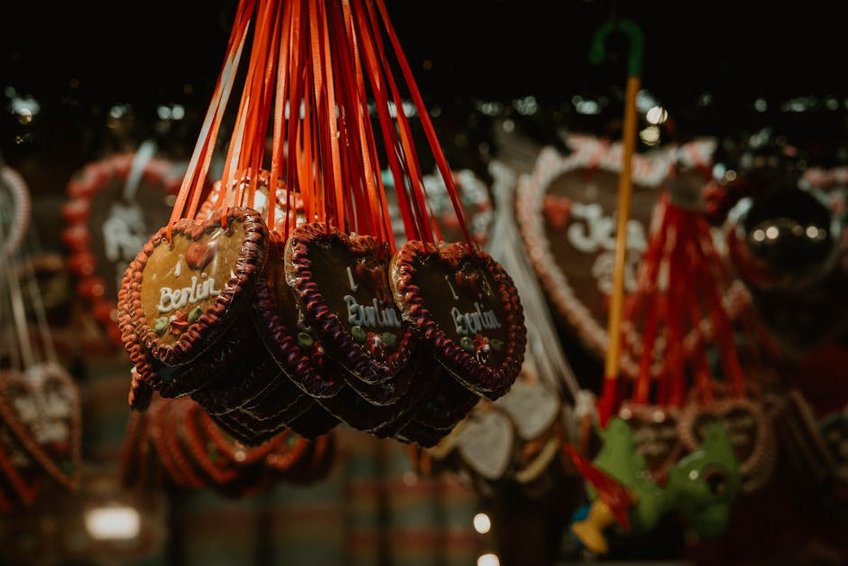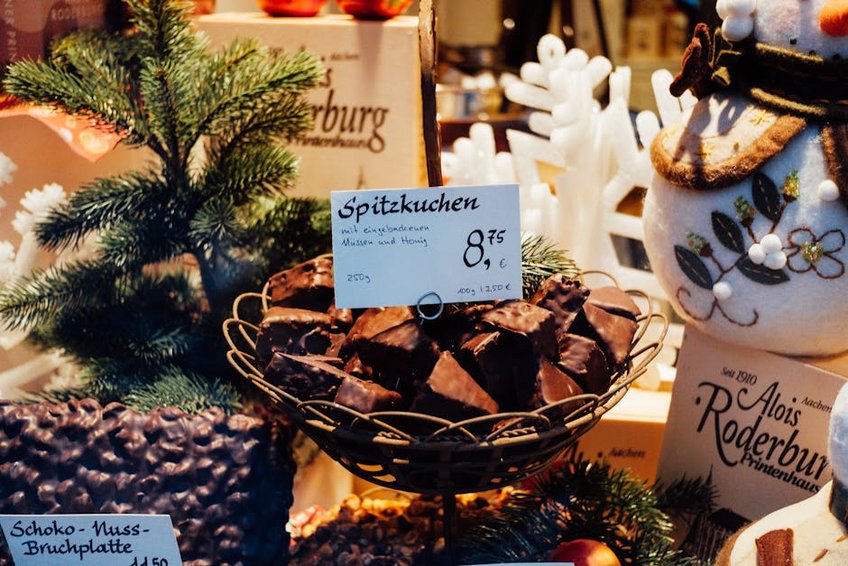Christmas Chocolate Tours in Germany
Imagine strolling through a medieval German town square dusted with snow, the air filled with the irresistible aroma of roasting nuts, mulled wine, and, most importantly, rich, melting chocolate. This is the magical reality of embarking on one of the many incredible Christmas chocolate tours in Germany. As the home of some of the world’s most famous chocolate makers and the inventor of the Christmas market, Germany transforms into a chocolate lover’s paradise each December. A dedicated Christmas chocolate tour offers you a guided path through this festive wonderland, connecting you directly with master chocolatiers, historic confectioneries, and unique tasting experiences you’d likely miss on your own. From watching artisans hand-dip marzipan treats in Nuremberg to sipping the thickest hot chocolate in Cologne’s shadowy cathedral square, these tours provide a deliciously immersive way to experience the country’s deep-rooted holiday traditions. You’ll not only satisfy your sweet tooth but also gain a deeper appreciation for the craftsmanship and history behind Germany’s beloved Christmas treats, making it an unforgettable adventure for families, couples, and solo travelers alike.
Christmas Chocolate Tours in Germany – Essential Information
Before you dive into this sugary adventure, it’s crucial to understand what these tours typically entail. A Christmas chocolate tour in Germany is far more than just a guided walk; it’s a curated sensory experience. Most tours are operated by local experts who have partnerships with specific market stalls, chocolatiers, and historic shops, granting you access and tastings that aren’t available to the general public. They expertly weave together the history of German Christmas traditions with the story of chocolate’s arrival and integration into the culture. You’ll learn why certain cities became chocolate hubs and how specific treats, like the Dresdner Stollen or Aachener Printen, which often contain chocolate, are central to the festive season. The best tours balance education with indulgence, ensuring you walk away with both a full stomach and a richer understanding of the holiday’s culinary heart.
What to Expect on a Tour – A Typical Itinerary
- Guided Market Exploration: Your guide will lead you through the labyrinth of wooden huts at a famous Christkindlmarkt, explaining the significance of different stalls and helping you navigate the overwhelming choices to find the highest quality, most authentic chocolate delicacies.
- Artisan Chocolatier Visits: Tours often include a stop at a dedicated chocolate shop or manufactory away from the main market bustle, where you can watch demonstrations of chocolate-making techniques and sample pralines, truffles, and bars made on-site.
- Historical & Cultural Context: As you walk between stops, your guide will share fascinating stories about the city’s history, its Christmas market origins, and how cocoa became a staple of the German holiday season, connecting the dots between culture and confectionery.
- Budget-Friendly (Under $50 USD per person): Look for shorter, 1.5-2 hour group walking tours in smaller cities like Erfurt or Lübeck. These still offer excellent tastings and guidance but at a more accessible price point.
- Mid-Range ($50 – $100 USD per person): This is the standard for most high-quality 2.5-3 hour tours in major cities like Munich, Berlin, or Cologne. This price includes a generous number of tastings and a knowledgeable guide.
- Luxury/Private ($150+ USD per person): For a truly exclusive experience, private tours offer customization, access to behind-the-scenes locations like private chocolate kitchens, and more premium tastings, such as vintage hot chocolate or pairing with German dessert wines.
- German National Tourist Board – Christmas Traditions
- Smithsonian Magazine – Guide to Germany’s Christmas Markets
Key Details – Duration, Group Size, and Inclusions
Most Christmas chocolate tours in Germany are walking tours that last between 2 to 3 hours, covering a manageable distance within a single city center. Group sizes are typically kept intimate, ranging from 8 to 15 people, to ensure a personal experience and easy interaction with the guide. The price of the tour almost always includes all pre-arranged food and drink samples, which can be quite substantial—often amounting to a full meal’s worth of sweets and drinks. It’s essential to check the listing beforehand, but you can generally expect to taste several varieties of hot chocolate, chocolate-covered fruits and nuts, traditional cakes like Stollen, and perhaps a savory snack to balance the sweetness. The guide’s expertise and all tastings are included, but you should bring extra cash if you wish to purchase additional treats or souvenirs from the visited vendors.

Christmas Chocolate Tours in Germany – Planning Your Trip
Timing is everything when planning your chocolate-themed holiday. The German Christmas market season is famously short, typically running from late November until December 23rd or 24th. This creates a narrow but intense window for your visit. Booking your tour itself should be done well in advance, as spots fill up quickly, especially for English-language tours on weekends. When selecting a tour, read reviews carefully to find one that matches your pace—some are more focused on history and storytelling, while others are straight-to-the-point tasting crawls. Also, consider your physical comfort; German winters are cold and often wet. Dress in warm, waterproof layers and comfortable walking shoes, as you’ll be standing and strolling through open-air markets. Finally, communicate any dietary restrictions clearly when you book, as while many tours can accommodate vegetarians, options for vegans or those with severe nut allergies may be more limited given the nature of the products.
Best Time to Visit for Chocolate Tours
The absolute prime time for a Christmas chocolate tour in Germany is during the first two weeks of December. During this period, the festive spirit is at its peak, all market stalls are fully operational, and the crowds, while present, are more manageable than on weekends closer to Christmas. The weather is cold enough to make a warm mug of hot chocolate feel truly magical, but major travel-disrupting snowstorms are less common than in January. Avoid the very opening weekend in late November, as stalls can still be setting up, and the final weekend before Christmas, when crowds reach their maximum and locals are doing their last-minute shopping. Weekdays are always preferable to weekends for a more relaxed and intimate tasting experience.
Budget Planning and Costs
Essential Preparation Checklist
To ensure your chocolate tour is nothing but sweet, a little preparation goes a long way. First, book your tour tickets online several weeks before your trip. Next, confirm your meeting point and time, and plan to arrive 10 minutes early. Dress appropriately for cold, potentially rainy weather with a warm coat, scarf, hat, and comfortable, waterproof shoes. Bring a reusable water bottle to cleanse your palate between rich tastings. While the tour includes food, it’s wise to have a light savory meal beforehand so you’re not sampling on an completely empty stomach. Finally, ensure your phone or camera is charged—you’ll want to capture the beautiful market scenes and your delicious discoveries. Don’t forget to pack a small bag for any chocolatey souvenirs you might buy along the way.
Christmas Chocolate Tours in Germany – Top Cities and Activities
While you can find wonderful chocolate experiences across the country, certain German cities are legendary for their Christmas markets and confectionery heritage, making them the top destinations for a dedicated tour. Cologne, with its spectacular cathedral backdrop, is a chocolate powerhouse, home to the immense Imhoff-Schokoladenmuseum and a market famed for its immense Schokoladen-Brunnen (chocolate fountain). Nuremberg’s Christkindlesmarkt, one of the oldest and most famous in the world, is the place for exquisite, hand-decorated gingerbread and marzipan. In the east, Dresden’s Striezelmarkt is the birthplace of the Christstollen, a fruit bread often enjoyed with a cup of cocoa. Meanwhile, Munich offers a blend of Bavarian tradition and luxury chocolate shops. Each city provides a unique twist on the chocolate tour theme, ensuring that no two experiences are ever the same.
Must-See Highlights
No Christmas chocolate tour in Germany is complete without experiencing its quintessential highlights. Tasting authentic, thick German hot chocolate, known as Heiße Schokolade or Trinkschokolade, is a non-negotiable rite of passage; it’s far richer and less sweet than its American counterpart. Visiting the Nuremberg Gingerbread (Lebkuchen) specialists is another must; these spiced cookies are often dipped in dark chocolate and are a protected regional specialty. In Cologne, a stop at the Chocolate Museum or a nearby chocolatier to see how pralines are filled is a fascinating glimpse into the craft. Finally, sampling a piece of warm, buttery Christstollen from Dresden, perhaps with a marzipan center, beautifully illustrates how chocolate and spice are woven into the very fabric of a German Christmas.
Hidden Gems and Local Favorites
Beyond the famous markets, the true magic often lies in the hidden gems that only a good local guide can show you. This might be a tiny, family-run Konditorei (cake shop) that has been making the same chocolate-covered Christmas cookies for generations, using a recipe that’s a closely guarded secret. In many cities, guides know which market stall serves the most exceptional version of Schokofrüchte—chocolate-dipped strawberries, oranges, or bananas. Another local favorite is Printen from Aachen, a spiced biscuit similar to gingerbread that is often partially coated in chocolate. Your guide might also lead you to a stall selling hot chocolate with a shot of rum or amaretto for the adults, a beloved local way to stay warm. These off-the-beaten-path discoveries are what transform a simple tasting into an unforgettable cultural immersion.
Christmas Chocolate Tours in Germany – Practical Travel Information
Navigating Germany during the Christmas season requires some practical know-how. The country has an excellent and efficient public transportation system, making it easy to travel between cities by train (Deutsche Bahn) and within cities via U-Bahn (subway), S-Bahn (urban train), and trams. For international travelers, major airports in Frankfurt, Munich, and Berlin offer numerous connections to other cities. When it comes to payment, while credit cards are increasingly accepted in shops and restaurants, Christmas markets are overwhelmingly cash-based. It’s essential to carry plenty of Euros, preferably in smaller denominations, for market purchases, restroom fees (which usually cost €0.50-€1), and tips for your tour guide. While English is widely spoken in tourist areas and on tours, learning a few basic German phrases like “Danke” (Thank you) and “Eine heiße Schokolade, bitte” (A hot chocolate, please) will be greatly appreciated.
| Category | Options/Features | Price Range (USD) |
|---|---|---|
| Accommodation (per night) | Hostel/Budget Hotel, City Center | $80 – $120 |
| Accommodation (per night) | Mid-Range Hotel, City Center | $150 – $250 |
| Accommodation (per night) | Luxury Hotel, City Center | $300+ |
| Intercity Train Ticket | Standard Fare (e.g., Frankfurt to Cologne) | $40 – $80 |
| Tourist Taxi Ride | Short trip within a city | $15 – $25 |
| Market Meal & Drink | Bratwurst, Glühwein, & a Treat | $15 – $20 |


